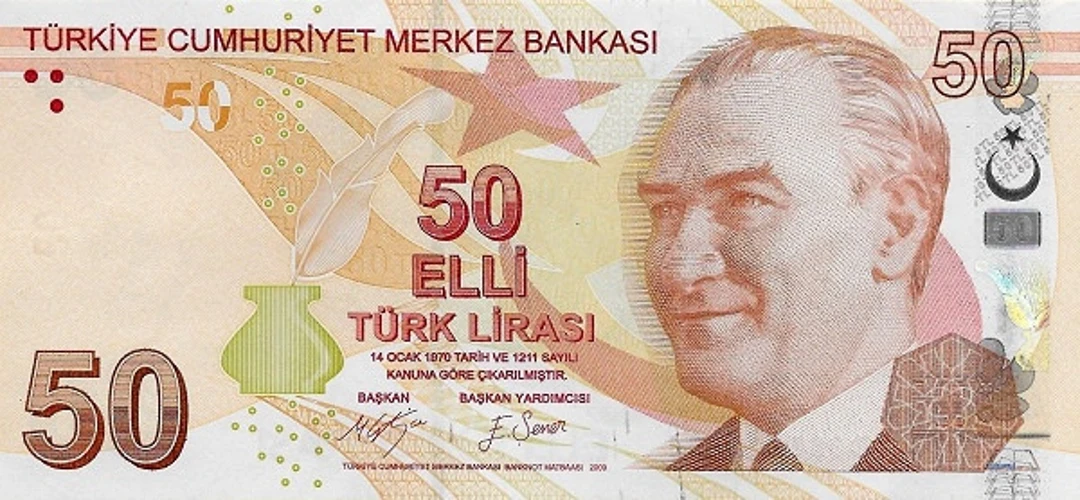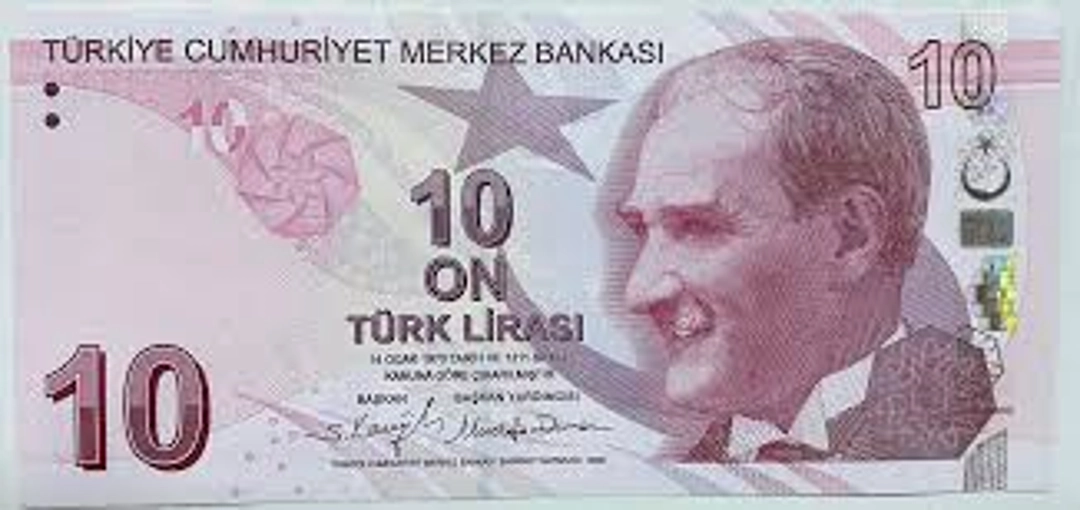The Turkish Lira (TRY) is one of the most important indicators of the health of the economy that spans Europe and Asia.
Because of this, it’s also important for investors, tourists, and entrepreneurs to have some knowledge about the Turkish Lira. As Turkey’s economy becomes more integrated into the global world, understanding its currency only becomes more important.
This guide will provide you with an in-depth view of the history, current situation, and future of the Turkish Lira so you have a better understanding of this section of the country.
While traveling in Turkey, consider bringing an iRoamly Turkey travel eSIM to stay connected and easily track any financial updates or currency changes during your trip.

New Turkish Lira Denominations
The Turkish Lira (TRY) is available in both banknotes and coins:
Banknotes:
Common denominations: 5, 10, 20, 50, 100, and 200 TRY.
Each note is distinct in size and color for easy identification.
Coins:
Common denominations: 1, 5, 10, 25, and 50 kuruş (subunit), and 1 TRY.
100 kuruş equals 1 Turkish Lira.

Turkish Lira Through the Ages
The Turkish Lira has a long history, first being introduced in 1844 as the Ottoman Empire’s currency. In 1923, when the Republic of Turkey was founded, the Lira remained the country’s official currency, but it struggled in the early years of independence. One notable change to the currency was the creation of the “New Turkish Lira” in 2005, when six zeros were dropped from the original currency to stabilize its value.

One of the Lira’s most turbulent periods began during the 1970s and 1980s, when the Turkish economy was plagued by high inflation and economic volatility. The economic crisis of 1994 was especially brutal, causing a steep devaluation of the Lira and requiring the country to enact sweeping financial measures. The year 2001 was also pivotal for the currency, as a banking crisis prompted Turkey to allow the Lira to float, a turning point in the Lira’s history.
The 2005 redenomination really helped Turks trust their currency again and also made converting and spending money much more straightforward. Prior to the switch, you would be charged millions, if not billions, of Lira for just about everything, which made shopping quite difficult. The new ratio was one New Turkish Lira for one million old Lira.
In recent years, the Turkish Lira has once again seen turbulence. High inflation and economic policy volatility have contributed to the currency’s struggles, although early 2000s-era guid inside the country helped mitigate the situation. However, domestic political instability and an uneven outside economy have undermined its strength abroad, as well.

Traveling to Turkey is an experience in and of itself when it comes to its currency. Picture strolling the colorful markets of Istanbul, where everything is bought with cash and bargaining is the norm.
In these bustling marketplaces, the more small bills of Turkish liras you have, the more pleasant your shopping excursion will be. And it’s not just about what you purchase; it’s about interacting with the locals, dealing in lira for lira.
As for transportation, Turkey's transportation system is mostly "pay-as-you-go," using cash or credit cards. Imagine exploring Turkish cities by bus or ferry. You'll get a glimpse of the daily life of the locals.
For added comfort, it’s a good idea to grab a little cash at the airport, since not all of the terminals have ATMs. But, don’t exchange all your money over there as the exchange rates aren’t great.

When it comes to food, credit cards are widely accepted in most cities and tourist areas, but it is still a good idea to carry cash for those small, hole-in-the-wall restaurants. By mixing and matching your spending, you’re able to better navigate your trip. After all, a little advance planning can make for a much smoother travel experience.
Lastly, always be sure to check the exchange rates before traveling, as it will help you make educated decisions. There are a lot of great travel apps that can notify you when rates are in your favor. Savvy travelers typically carry a variety of payment options and know when to use each one. Because frankly, anything you can do to make managing your Turkish travel budget easier, is going to leave more room for fun and exciting adventures!
Influences on the Turkish Lira’s Value
But here’s a closer look at why the Turkish lira is currently taking a beating. For starters, the country’s economy has run into some major problems. Inflation isn’t helping either. When prices skyrocket, it puts more pressure on the country’s currency. Mix in political uncertainty, shifting government policies, and you have the makings of a turbulent lira.
But it’s not just what’s happening inside the country. The influence of people abroad matters a lot too. Foreign investors watch the country closely, and their actions can influence the value of the lira. If they get spooked, they may bail, causing the lira to begin dropping. On the other hand, signs of stability and investment-friendly policies can cause them to flock back in, pushing up the value of the lira.

Source: Axios
The above factors everyone is trying to figure out. However, the key lesson here is that the lira is pulled and pushed from the domestic and international sides. It’s all about weighing these moving pieces to get a directional sense on the road ahead for the currency.
Future Projections and Economic Insights
The future of the Turkish lira? Only time will tell, as it’s a mix of factors both at home and abroad that will determine its fate. Watch how well or poorly the country manages its economy (a battle it has not been particularly winning of late, with inflation, in particular, running rampant). The currency will also be affected by the political and economic decisions made in the country. Those decisions could help stabilize it or put more pressure on it. Additionally, regional tensions can quickly send the lira off course.

Global economic dynamics are also worth noting. Shifting international trade and interest rate dynamics can affect emerging markets—including Turkey. If Turkey can build up its economic ties and appeal to foreign investment, the lira may rebound. However, it might still have to contend with geopolitical risk and turbulent global markets. Bottom line: The future of the Turkish lira depends on a combination of domestic prospects and global economic forces propelling it forward.
Cultural and Societal Impact of Currency Fluctuations
All the ups and downs of the Turkish lira can feel like a roller coaster for locals. Just think: walking into a store yesterday and then again today, prices might have gone up in those 24 hours. That’s a crazy way to live! It means your spending habits and routines have to constantly change. People may even buy more things faster before the prices rise — it’s wild! And creates new types of shopping culture than in a more developed, “stable” economy.

These changes also impact things outside the grocery store. It’s hard to plan a family trip or save for the future when you have no idea what your money is going to do. This uncertainty forces people to get creative and figure out how to make their lira go the extra mile. And, for as challenging as some of the aspects may be, on the whole, the Turkish are a resilient group, who have adapted and found ways to deal with and even thrive under the financial uncertainty.
In Turkey, the lira is really volatile, and people sometimes feel like they can’t trust it. So they choose to store their money in a currency that they feel like is stronger and would provide them better stability. But there is also a lot of national pride too, and many people are always waiting for the good days ahead when the value of the lira will be stronger, which would in turn represent a stronger economy. It creates a pretty interesting relationship with the lira and what it stands for and life in Turkey.
Conclusion The Turkish Lira is a great lens through which to view Turkey’s economic history. Since Ottoman times to the rise of digital payments, the Lira has evolved but remains a core aspect of Turkish society and culture. For travelers to the country, for investors, and for businesses, understanding the players in the Turkish currency scene offers opportunities in this dynamic economy. It’s not easy, but Turkey’s location and its reforms point to a future that is anything but dull for the Lira.
Conclusion
That’s all you need to know about the lira, the currency of Turkey.
We covered its tumultuous history, from hyperinflation and banking crises to relative stability, which gives context to Türkiye’s economy and markets now. Plus, we offered tips on tackling the hard sell in tourist spots. Hopefully, this guide has been a useful companion.
